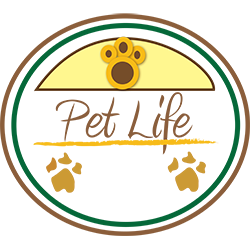
Best ways to train your pet to be more obedient
Having a pet is a rewarding experience. The companionship, unconditional love, and joy they bring are truly priceless. However, to fully enjoy these benefits, it's essential for your pet to be well-trained and obedient. This not only ensures their safety but also makes your interaction more pleasant and harmonious. In this guide, we'll discuss some of the best strategies to train your pet to be more obedient.
Understanding the Basics of Pet Training
The cornerstone of effective pet training involves understanding your pet's mindset and using techniques that work with their natural instincts, not against them. It's also crucial to remember that every pet is unique. Hence, what works for one may not necessarily work for another. Patience, consistency, and positive reinforcement are the key elements of successful pet training.
Implementing the Training Techniques
1. Start Training Early
The adage, "You can't teach an old dog new tricks," isn't entirely accurate. However, training is undoubtedly easier when your pet is still young. This is because habits and behaviors are not yet fully ingrained, and younger pets are generally more receptive to new experiences.
2. Use Positive Reinforcement
Positive reinforcement is a method where you reward the behaviors you want to encourage. This could be a treat, a favorite toy, or praise. The reward should be given right after the desired behavior, to help your pet make the connection.
3. Be Consistent
Consistency is crucial when training your pet. All family members should use the same commands and reward system. Consistency also means you should reinforce the desired behavior every time it occurs.
4. Keep Training Sessions Short and Regular
Pets, particularly puppies and kittens, have short attention spans. It's more effective to have short, frequent training sessions rather than infrequent, long ones. Aim for a few minutes at a time, several times a day.
5. Train in a Distraction-Free Environment
Starting the training in a quiet, familiar environment with few distractions will help your pet focus better. As they become more proficient, you can gradually introduce distractions.
6. Use Clear, Simple Commands
Use short, one-word commands like "Sit," "Stay," or "Come." Say the command clearly and only once. Repeating the command can teach your pet that they don't need to respond immediately.
7. Gradually Increase the 'Three D's'
The 'Three D's' in pet training are Duration, Distance, and Distraction. Start by asking your pet to hold a command for a short duration, then gradually increase the time. Similarly, start training close to your pet, then gradually increase the distance. Once your pet can obey commands with you at a distance, introduce distractions.
8. Socialize Your Pet
Socializing your pet is a vital part of obedience training. Exposing them to different people, environments, and other animals can help them become more adaptable and well-behaved.
9. Don't Punish – Redirect Instead
Avoid punishing your pet as it can lead to fear, anxiety, and confusion. Instead, interrupt the undesired behavior and redirect your pet's attention to something else.
10. Seek Professional Help If Needed
If you're struggling with training your pet, don't hesitate to find help from a professional trainer. They can provide you with tailored advice and techniques that can make the training process easier.
Training Specific Commands
1. Sit Command
The Sit command is one of the commands that is easiest to teach. Hold a treat close to your pet's nose and move your hand up, allowing their head to follow the treat causing their bottom to lower. Once they're in the sitting position, say 'Sit,' give them the treat and share affection.
2. 'Come' Command
This command could help keep your pet out of trouble or bring them back to you if they slip out of their leash. Start the training in a quiet, enclosed space. With a leash and collar on, get down to your pet's level and say 'Come' while gently pulling the leash.
3. 'Stay' Command
Before teaching this command, ensure your pet has mastered the 'Sit' command. Ask your pet to 'Sit,' open the palm of your hand in front of you, and say 'Stay.' Take a few steps back and reward them with a treat and affection if they stay.
Conclusion
Pet training is an ongoing process and requires commitment, consistency, and patience. The end goal is to not only have an obedient pet but also to foster a strong, loving bond between you and your pet. Always remember that every pet is unique, and the pace of learning can vary greatly from one pet to another. Don't rush the process, celebrate small victories, and keep sessions fun and positive. With time and practice, your pet will become a well-mannered companion who is a pleasure to have around.
Understanding the Basics of Pet Training
The cornerstone of effective pet training involves understanding your pet's mindset and using techniques that work with their natural instincts, not against them. It's also crucial to remember that every pet is unique. Hence, what works for one may not necessarily work for another. Patience, consistency, and positive reinforcement are the key elements of successful pet training.
Implementing the Training Techniques
1. Start Training Early
The adage, "You can't teach an old dog new tricks," isn't entirely accurate. However, training is undoubtedly easier when your pet is still young. This is because habits and behaviors are not yet fully ingrained, and younger pets are generally more receptive to new experiences.
2. Use Positive Reinforcement
Positive reinforcement is a method where you reward the behaviors you want to encourage. This could be a treat, a favorite toy, or praise. The reward should be given right after the desired behavior, to help your pet make the connection.
3. Be Consistent
Consistency is crucial when training your pet. All family members should use the same commands and reward system. Consistency also means you should reinforce the desired behavior every time it occurs.
4. Keep Training Sessions Short and Regular
Pets, particularly puppies and kittens, have short attention spans. It's more effective to have short, frequent training sessions rather than infrequent, long ones. Aim for a few minutes at a time, several times a day.
5. Train in a Distraction-Free Environment
Starting the training in a quiet, familiar environment with few distractions will help your pet focus better. As they become more proficient, you can gradually introduce distractions.
6. Use Clear, Simple Commands
Use short, one-word commands like "Sit," "Stay," or "Come." Say the command clearly and only once. Repeating the command can teach your pet that they don't need to respond immediately.
7. Gradually Increase the 'Three D's'
The 'Three D's' in pet training are Duration, Distance, and Distraction. Start by asking your pet to hold a command for a short duration, then gradually increase the time. Similarly, start training close to your pet, then gradually increase the distance. Once your pet can obey commands with you at a distance, introduce distractions.
8. Socialize Your Pet
Socializing your pet is a vital part of obedience training. Exposing them to different people, environments, and other animals can help them become more adaptable and well-behaved.
9. Don't Punish – Redirect Instead
Avoid punishing your pet as it can lead to fear, anxiety, and confusion. Instead, interrupt the undesired behavior and redirect your pet's attention to something else.
10. Seek Professional Help If Needed
If you're struggling with training your pet, don't hesitate to find help from a professional trainer. They can provide you with tailored advice and techniques that can make the training process easier.
Training Specific Commands
1. Sit Command
The Sit command is one of the commands that is easiest to teach. Hold a treat close to your pet's nose and move your hand up, allowing their head to follow the treat causing their bottom to lower. Once they're in the sitting position, say 'Sit,' give them the treat and share affection.
2. 'Come' Command
This command could help keep your pet out of trouble or bring them back to you if they slip out of their leash. Start the training in a quiet, enclosed space. With a leash and collar on, get down to your pet's level and say 'Come' while gently pulling the leash.
3. 'Stay' Command
Before teaching this command, ensure your pet has mastered the 'Sit' command. Ask your pet to 'Sit,' open the palm of your hand in front of you, and say 'Stay.' Take a few steps back and reward them with a treat and affection if they stay.
Conclusion
Pet training is an ongoing process and requires commitment, consistency, and patience. The end goal is to not only have an obedient pet but also to foster a strong, loving bond between you and your pet. Always remember that every pet is unique, and the pace of learning can vary greatly from one pet to another. Don't rush the process, celebrate small victories, and keep sessions fun and positive. With time and practice, your pet will become a well-mannered companion who is a pleasure to have around.
- Choosing a selection results in a full page refresh.












